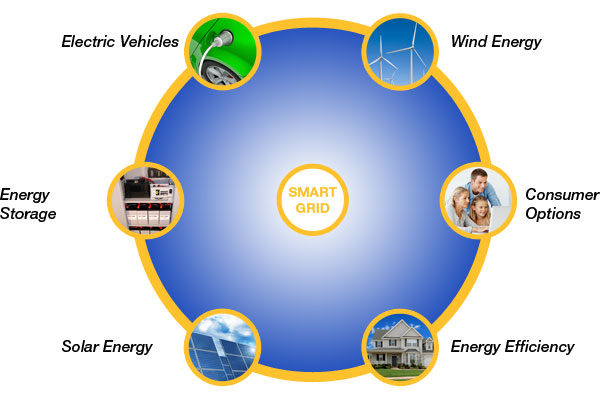Smart Grids: how to Manage them Optimally

leffelectric.com
Usually we talk about the necessity of using innovative methods to produce and distribute electrical energy. There are a lot of available technologies that can help us to obtain energy from renewable sources (wind, sun or sea’s waves, etc.), such as solar panels or wind turbines. Nowadays, the presence of active users in the grid, that are users that can produce, use or sell energy, changes the task of the distribution system: not only energy’s transferring, but also the control and management of a bidirectional flux of power.
To resolve this issue, micro grids were born: these are little electrical systems in low or medium voltage, characterized by a strong architecture of control and automation, so that they are usually called “smart grids”. These systems can work in interconnected mode as well as islanded mode, that is independently from the big distributors.
In these micro grids, there are little controllable generators, that usually use green fuels, and also uncontrollable generators, that employ renewable sources; the former are called “controllable” because the energy produced can be controlled modifying the fuel rate, the latter are “uncontrollable” because we could only forecast the production, but not control it. Moreover, storage systems and electrical loads are usually present in smart grids, in order to store or use the energy produced. In smart grids, the level of voltage or power can be controlled with particular softwares and some of them are used to forecast the production from renewable sources. In order to avoid instability, controllable generators are managed to fulfil the load’s demand of energy when the forecasted renewable energy isn’t enough.
The managmenent of controllable generators is obtained implementing specific algorithms. The input are fixed values or trends of power demanded by loads and forecasted from renewable sources and they are needed to write the “production list”, that is a program that states which generator should produce a particular value of power at an established time.
In literature there are a lot of optimization algorithms adopted to solve this problem: for example, genetic algorithm, linear or not linear optimization. The choice is made considering the objectives of the optimization and the features of the system.

For example, if we want to feed the system in the cheapest way, we need to define all the terms of a cost function: the cost of the fuel, the cost due to the decay of the batteries, the cost of the electricity bought from the grid. Then, the “objective function” is formalized: it represents the production’s cost of energy in the microgrid, as a function of the power delivered by every generator. The chosen algorithm searches the minimum of the cost function, observing some constraints such as maximum power, maximum an minimum voltage or frequency level.
The development and the application of these algorithms in smart grids can lead to the optimal management of these innovative electrical systems, which are able to integrate old and new energy’s sources, in order to built the grid of the future.
